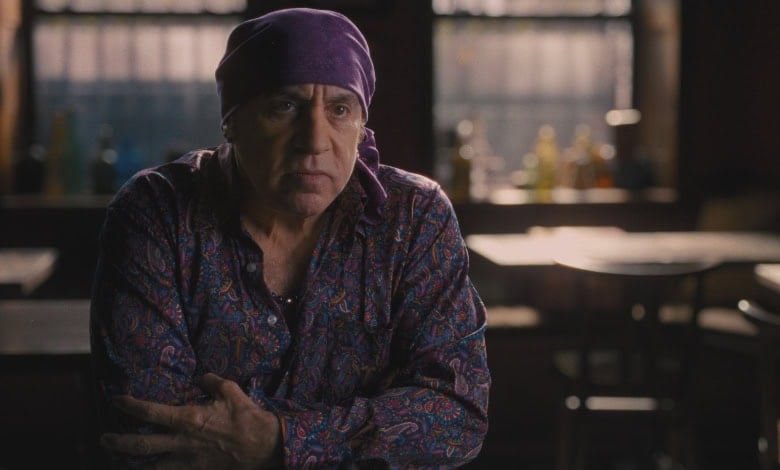We support our Publishers and Content Creators. You can view this story on their website by CLICKING HERE.

Write what you know.
For David Chase, that meant a saga about a depressed mobster with Mommy issues.
“Wise Guy: David Chase and The Sopranos” reveals how the showrunner came up with the iconic series, tapping his biography for a tale that entranced America.
And we still can’t let it go.
The two-part docuseries, now available on Max, is perfect for “Sopranos” fans eager to learn more about the now-classic saga. Oscar-winner Alex Gibney (“Totally Under Control,” “Taxi to the Dark Side”) spends too much time doling out fan service, but he eventually finds his purpose.
It’s worth the wait. Then again, any chance to revisit one of TV’s greatest shows is a plus.
It’s a shame the first installment offers so much surface-level detail.
“Specificity,” co-star Michael Imperioli said later in the docuseries, marked Chase’s signature work. It’s in short supply for the first installment. We start with a mad dash through Chase’s formative years, a clip montage Gibney speeds up with dispiriting results.
Chase himself chafes at the navel gazing, perhaps the reason Gibney and co. punched the fast-forward button.
“Television in the past was always about making you feel good.”
The 2-part HBO Original Documentary Wise Guy David Chase and The Sopranos premieres tonight at 8 pm ET on @StreamOnMax. #WiseGuyHBO pic.twitter.com/2R50caHHlL
— HBO (@HBO) September 7, 2024
The docuseries improves as we watch auditions for the main players. It’s hard to imagine anyone else playing Tony, Carmela or Christopher, but in the late 1990s those roles were up for grabs.
Plus, no one expected “The Sopranos” to become a cultural phenomenon. At the time, HBO hadn’t distinguished itself as a content superpower. And Chase, while a veteran TV scribe, hardly stood out in La La Land.
And he knew it.
So he looked at his life – an embittered mother, a New Jersey upbringing and proximity to thugs – and poured it into his last chance for glory.
We all know how it turned out.
Episode One brims with show clips and quippy observations. Gibney frames the interview as if it were Tony and Dr. Melfi in a therapist’s office. Cute. Less so is the intro inserting Chase into the show’s opening sequence.
Is this a TikTok video or a serious TV portrait?
RELATED: WHY ‘MANY SAINTS OF NEWARK’ IS THIRD-TIER ‘SOPRANOS’
The docuseries finds its voice in its second installment, particularly when the focus turns to star James Gandolfini.
The actor, who passed in 2013, is seen via archival interviews. What many may not have known is that his off-screen demons derailed the series.
Again and again.
We learn about the production’s attempt to get him into treatment, how the show essentially shut down when he wouldn’t show up for work and why playing a mob boss weighed on his psyche.
His cast mates describe him as kind and generous, but it’s clear the role forced him to explore emotions which did him few favors.
That’s not an excuse, just the picture painted by Gibney’s camera.
It’s always fascinating to learn how a pop culture sensation almost never happened. Consider how Chase insisted on showing Tony whack a snitch in the first season.
Would audiences turn on Tony, who up until then kept his hands (mostly) clean? Chase insisted he tell the story warts and all, a critical step in the show’s early evolution.
“Therapy made him a better mobster,” Chase said of Gandolfini’s signature role. And he’s right. It also made “The Sopranos” a series that holds up beautifully today.
Great writing. Stunning performances. Black humor. Suspense. Tragedy.
It’s fascinating, if not fully explored, that Chase couldn’t follow up “The Sopranos” with art worthy of its legacy. “Not Fade Away” and “The Many Saints of Newark” proved forgettable. Chase dreamed of being a motion picture director, and when “The Sopranos” gave him the chance he couldn’t equal the show’s excellence.
Like George Lucas, Chase will forever be identified with one title. But oh, what a title. And “The Sopranos” remains deeply cinematic.
He finally achieved his dream. Did it matter that the small screen delivered it?
The docuseries works best as an X-ray of the creative process. Chase wasn’t easy to work with, no doubt. He’d throw out his ideas and that of his collaborators, the process essentially shaming them into occasional silence.
Creators can be flaky, temperamental or even cruel. The finished product is often worth it. Gibney is at his best when he’s teasing out that process, the way a writer gets to the heart of a story on his terms.
“Wise Guy: David Chase and The Sopranos” is an imperfect, but fitting tribute to both creator and saga.

 Conservative
Conservative  Search
Search Trending
Trending Current News
Current News 



